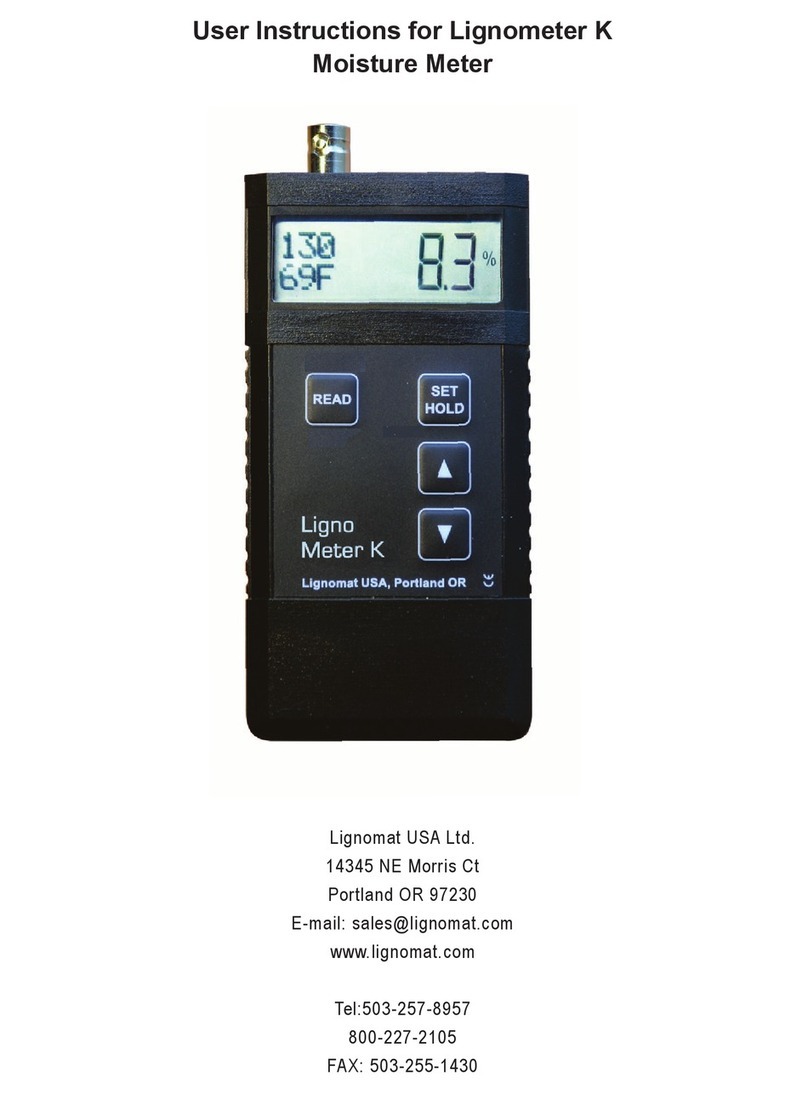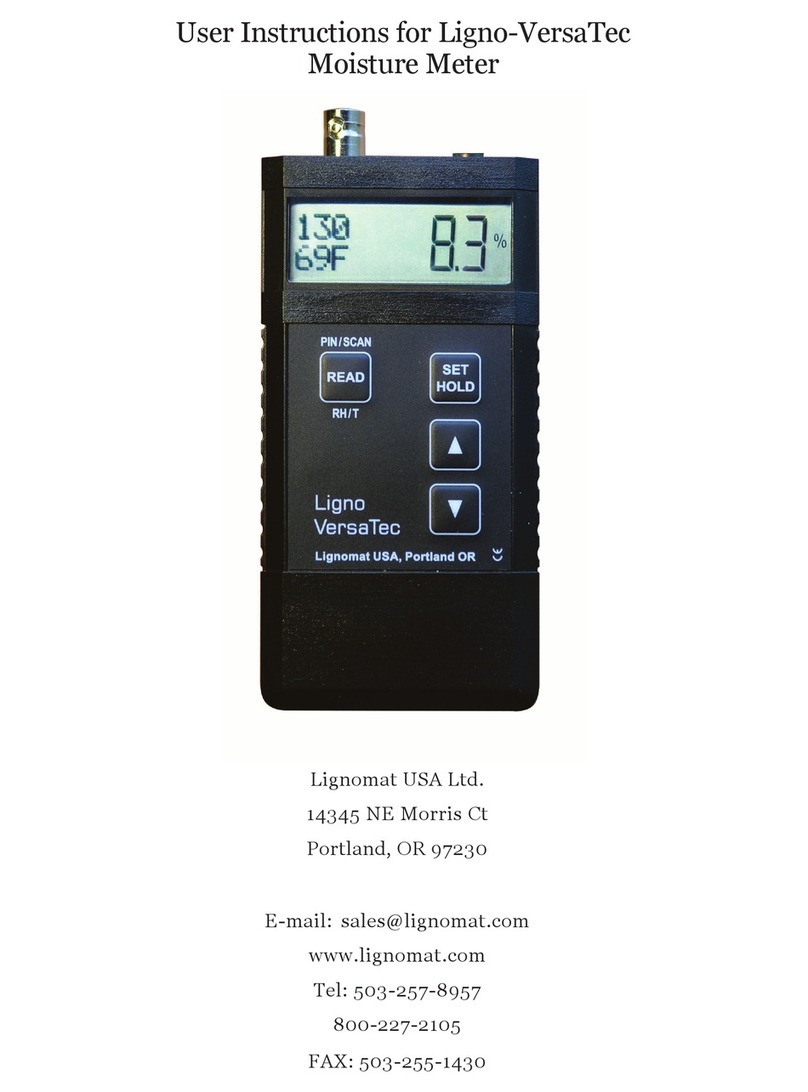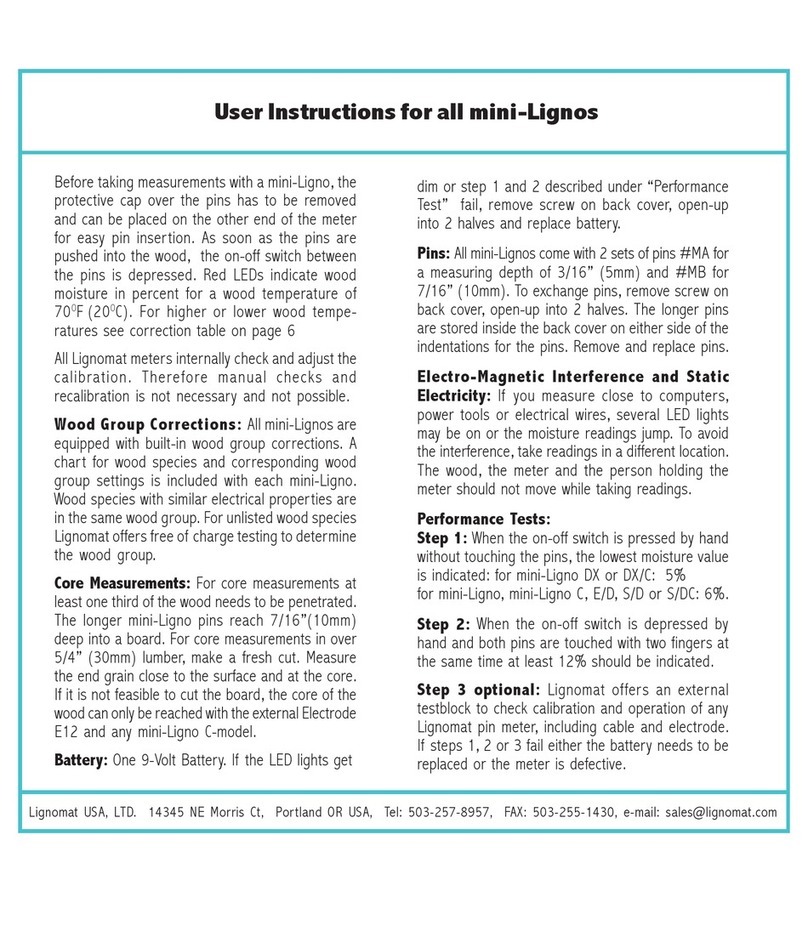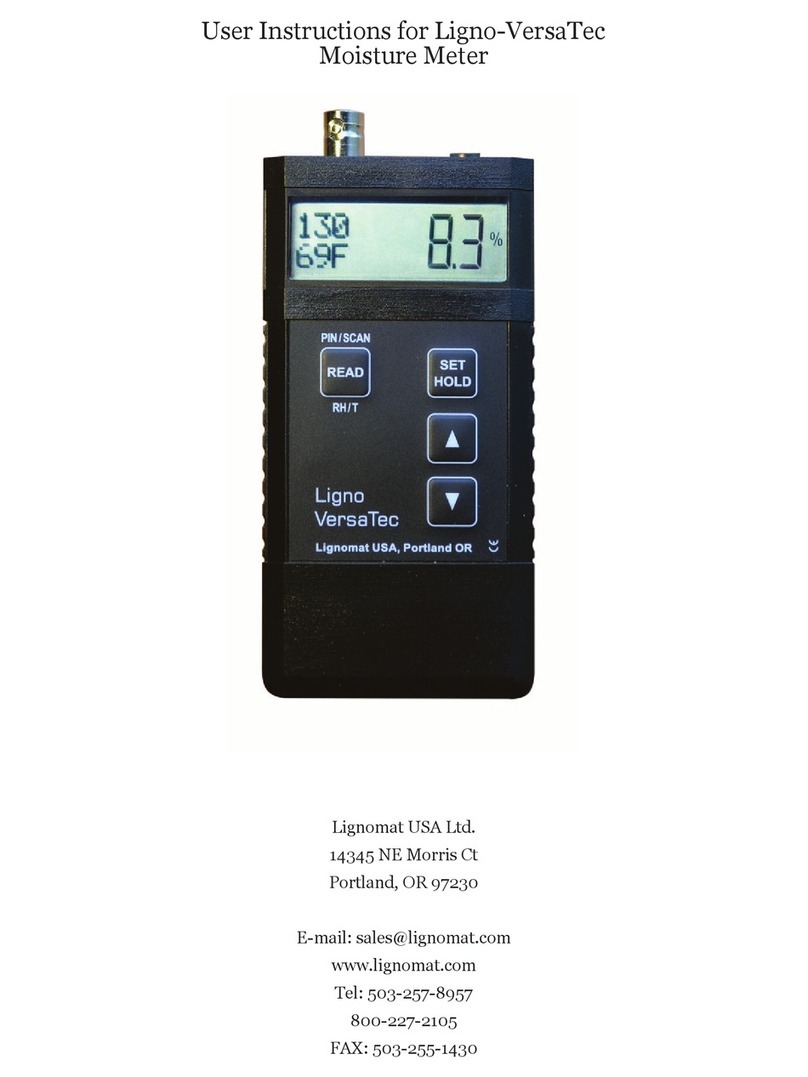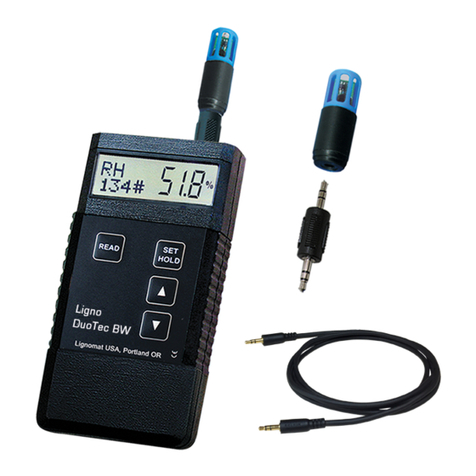
The PK system (in-kiln-moisture-monitor) gives reliable and easy obtainable infor-
mation about EMC (equilibrium moisture content) and MC (wood moisture content)
from several different probes distributed throughout the kiln. Moisture readings
can be obtained at the switch box outside of the kiln. The kiln operator can take
readings whenever necessary. After evaluation of the moisture readings against
the predetermined drying schedule, necessary changes in the climate settings can
be made. Thus the kiln operator will be able to run the kilns following the changing
moisture content; there will be less degrade, output and quality can be optimized.
1.1 Layout
The switch box mounted outside the kiln is connected with teflon cable to a series
of angle connectors mounted inside the kiln wall are permanently installed. A set of
removable cables is used inside the kiln to make the connection from angle con-
nectors at the wall to the probes in the lumber.
First, the location of the switch box and the location of the angle connectors should
be determined. The switch box should not be more than 60 feet away from the
kilns. Usually the angle connectors are mounted in pairs, referred to later as one
measuring station. The drawing on page 4 shows possible arrangements for MC
and EMC angle connectors. When determining the cable routing, consider that all
permanently mounted cables should be installed where no damage from lumber
packages being moved in and out of the kiln may occur.
1.2 Installation of Angle Connectors
Once the layout has been determined the angle connectors should be mounted first
- directly to the walll with plastic anchors on cinder block kilns or sheetmetal screws
on metal kilns. All screws must be stainless steel. A silicon base caulking should be
used to seal all holes including screw holes. Most silicon caulks have acetic acid
bases, which will cause masonry to deteriorate. There are caulks available with non
corrosive bases.
Possible groupings for MC and EMC are shown on page 4. For EMC points an
extra angle might be necessary to point EMC holder towards the interior of the
kiln. The EMC holder should be mounted in the air stream before the air enters the
stack of lumber. An aluminum drip shield should be mounted above each measur-
ing station to prohibit condensed water, pitch, acids, or boiler chemicals from falling
on the measuring station.
1.3 Installation of Cable Clamps
Before the cables can be installed, the cable clamps must be mounted. Each clamp
can hold several cables. Plastic wall anchors or No. 6 sheetmetal screws can be
used. The first clamp should be about six inches away from the measuring station.
Installation Manual
2
